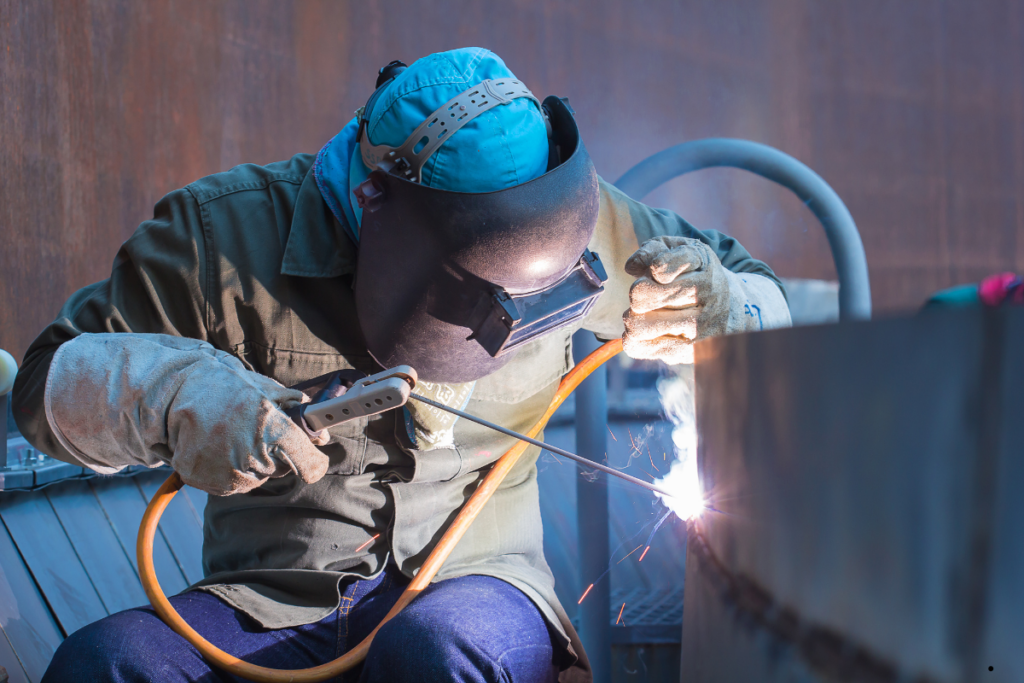
Welding is a versatile and essential skill that plays a crucial role in many industries, from construction and manufacturing to infrastructure development. While mastering the art of welding is a challenge, environmental factors such as extreme cold or heat can make the process even more demanding. At the Welding Academy, we’ve spent over 20 years preparing welders to face the realities of their work environments, including extreme weather conditions. Understanding how temperature impacts your welds is vital for both the quality of your work and your safety.
Cold environments present several obstacles for welders. Metals behave differently in freezing temperatures, becoming more brittle and prone to cracking, which can affect the weld’s integrity. In addition, cold weather can make it harder for welders to maintain steady hands, and condensation or ice can lead to surface contamination.
Here are some of the key challenges welders face in cold environments:
Cold weather can make the metal brittle, especially materials like carbon steel, leading to an increased likelihood of cracking during of after welding.
In colder temperatures, the welding process may take longer as metal requires more time to reach the proper temperature for effective fusion.
Moisture from condensation or frost on metals can cause hydrogen-induced cracking, which can weaken welds over time.
Prolonged exposure to freezing conditions can cause hypothermia, frostbite, and fatigue, affecting a welder’s performance and overall health.
To mitigate the effects of cold weather on your welding projects, follow these tips:
Preheating the metal before welding helps reduce the risk of cracking and increases the likelihood of a smooth, even weld. The required preheat temperature will depend on the type of metal, so ensure you’re using the right temperature guidelines.
Ensure that the materials you’re working with are free from moisture, frost, or ice. Use drying techniques or store metals in a warmer area before starting your weld to prevent contamination.
In colder conditions, hydrogen-induced cracking is a bigger risk. Low-hydrogen electrodes can help reduce the possibility of cracks and improve the strength of the weld.
Wearing appropriate PPE (Personal Protective Equipment) for cold weather is essential. Insulated welding jackets, gloves, and boots can keep you warm and maintain your dexterity while working.
In multipass welding, ensure that the metal doesn’t cool too much between passes. Use a temperature monitor to maintain the correct interpass temperature, avoiding excess heat loss.
At the other end of the spectrum, welding in hot conditions brings its own set of challenges. The primary concerns is staying hydrated and ensuring your equipment and materials are operating at optimal temperatures despite the heat.
Key challenges of welding in hot environments include:
High temperatures can lead to heat exhaustion or even heat stroke, both of which can be dangerous for welders working in direct sunlight or enclosed spaces with limited airflow.
Excessive heat can cause the metal to expand, warp, or distort, affecting the overall precision of the weld and the structure’s integrity.
In hot environments, everything from the workpiece to the tools can become excessively hot, increasing the risk of burns to the welder.
When welding in extreme heat, consider the following tips:
Keeping your body hydrated is crucial when welding in hot environments. Drink water frequently and avoid dehydrating drinks like coffee or sugary drinks.
Where possible, plan your welding tasks during the cooler parts of the day, such as early morning or late afternoon. Avoid peak sunlight hours, especially in outdoor settings.
Excessive heat can cause metal distortion. To prevent this, control your heat input by adjusting your welding parameters to avoid overheating the workpiece.
If the metal becomes too hot during welding, use fans, water coolers, or air-conditioning units to regulate the temperature of your workspace. Some projects may also benefit from quenching (cooling metal with water) between passes.
Ensure that your workspace has adequate ventilation, especially if you’re working in confined areas. This helps reduce heat buildup and improves airflow, keeping the area safer and more comfortable.
Extreme temperatures, whether hot or cold, introduce new challenges to the welding process. However, with the right preparation and techniques, these challenges can be managed effectively. At the Welding Academy, our mission is to equip students with the knowledge and skills to adapt to a variety of work environments, ensuring that they are prepared for whatever the job requires. Whether welding in the bitter cold or sweltering heat, safety and attention to detail are paramount to ensuring a successful weld.
By following these tips and remaining mindful of the specific demands of extreme conditions, you can maintain high-quality standards while protecting your health and safety. After all, at the Welding Academy, we are committed to preparing welders not only for the craft by also for the diverse conditions they will encounter in their careers.